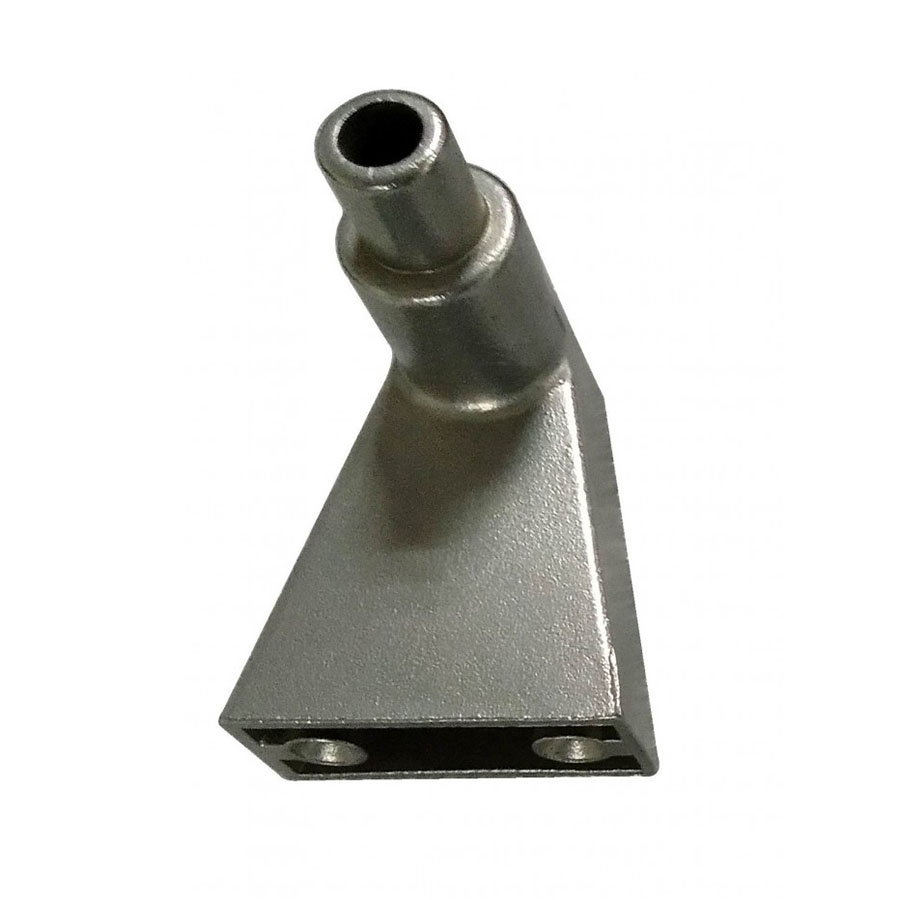
Alloy Steel Lost Wax Casting Parts
Material: Alloy Steel Process: Lost Wax Casting Weight: 0.96 KG
Cast alloy steel should be used when the strength of the casting is relatively high and the use of cast iron cannot meet the requirements.
Alloy Steel Precision Casting Parts
Cast alloy steel should be used when the strength of the casting is relatively high and the use of cast iron cannot meet the requirements. However, the fluidity of molten steel of cast steel is not as good as that of cast iron, so the thickness of the pouring structure should not be too small and the shape should not be too complicated. When the silicon content is controlled at the upper limit, the fluidity of molten steel can be improved.
Cast steel can be divided into cast alloy steel and cast carbon steel according to its chemical composition, and can also be divided into cast tool steel, cast special steel, engineering and structural casting and cast alloy steel according to its characteristics. Casting alloy steel can be divided into cast low alloy steel (the total alloy elements are less than or equal to 5%), cast alloy steel (the total alloy elements are 5% to 10%) and cast high alloy steel (the total alloy elements are greater than or equal 10%).
Wear-resistant alloy steel sand castings are the casting parts produced by sand casting process made of wear-resistant alloy steel. At RMC Foundry, the main sand casting processes we could use for wear-resistant alloy steel are green sand casting, resin coated sand casting, no-bake sand mold casting, lost foam casting, vacuum casting and investment casting. The heat treatment, surface treatment and CNC machining are also available at our factory as per your drawings and requirements.
Among a wide variety of casting alloys, wear-resistant cast steel is a very widely used alloy steel. Wear-resistant cast steel mainly improves the wear resistance of steel castings by adding different content of alloying elements, such as manganese, chromium, carbon, etc., to the alloy. At the same time, the wear resistance of wear-resistant steel castings also depends on the heat treatment method used by the foundry and the structure of the casting.
Steel castings are also very extensive in terms of metal and alloy selection. For example, the cast steel covers a wide range of alloys such as low carbon steel, medium carbon steel, high carbon steel, alloy steel, high alloy steel, stainless steel, duplex stainless steel, precipitation hardening stainless and other special steel alloys.
Steel castings the a combination of casting molding process and steel material metallurgy. They can not only have complex structure that are difficult to obtain by other forming processes, but also maintain the unique properties of steel, so the steel casting parts have a high important position in engineering structural materials. In most foundries, steel castings are mainly produced through these several casting processes: investment casting, lost foam casting, vacuum casting, sand casting and resin coated sand casting.
Chromium-molybdenum cast steel is widely used in industrial fields with relatively high mechanical properties. The addition of molybdenum to chromium steel can increase the strength of steel castings without having a significant impact on the impact toughness of cast steel.
Chromium-molybdenum cast steel has very good high temperature performance and creep resistance. After quenching and tempering or normalizing heat treatment, chromium-molybdenum cast steel can obtain excellent mechanical properties. Molybdenum can improve the hardenability of cast steel and reduce the temper brittleness of cast steel. Chromium-molybdenum cast steel is used for large-section castings and steel castings that require deep hardening.
▶ Raw Materials Available for Investment Casting (Lost Wax Casting Process)
• Carbon Steel: AISI 1020 - AISI 1060,• Steel Alloys: ZG20SiMn, ZG30SiMn, ZG30CrMo, ZG35CrMo, ZG35SiMn, ZG35CrMnSi, ZG40Mn, ZG40Cr, ZG42Cr, ZG42CrMo...etc on request.
• Stainless Steel: AISI 304, AISI 304L, AISI 316, AISI 316L and other stainless steel grade.
• Brass & Copper.
• Other Materials and Standards on request
▶ Capabilities of Investment Casting
• Max Size: 1,000 mm × 800 mm × 500 mm• Weight Range: 0.5 kg - 100 kg
• Annual Capacity: 2,000 tons
• Tolerances: On Request.
▶ Main Production Procedure
• Patterns & Tooling Design → Metal Die Making → Wax Injection → Slurry Assembly → Shell Building → De-Waxing → Chemical Composition Analysis → Melting & Pouring → Cleaning, Grinding & Shot Blasting → Post Processing or Packing for Shipment▶ Inspecting Lost Wax Castings
• Spectrographic and manual quantitative analysis• Metallographic analysis
• Brinell, Rockwell and Vickers hardness inspection
• Mechanical property analysis
• Low and normal temperature impact testing
• Cleanliness inspection
• UT, MT and RT inspection
▶ Post-Casting Process
• Deburring & Cleaning• Shot Blasting / Sand Peening
• Heat Treatment: Normalization, Quench, Tempering, Carburization, Nitriding
• Surface Treatment: Passivation, Andonizing, Electroplating, Hot Zinc Plating, Zinc Plating, Nickel Plating, Polishing, Electro-Polishing, Painting, GeoMet, Zintec.
• Machining: Turning, Milling, Lathing, Drilling, Honing, Grinding.
Wear-resistant (or abrasion-resistant) cast steel is a type of cast steel. It refers to the cast steel with good wear resistance. According to chemical composition, it is divided into non-alloy, low-alloy and alloy wear-resistant cast steel. There are many types of wear-resistant steel, which can be roughly divided into high-manganese steel, medium and low-alloy wear-resistant steel, chromium-molybdenum-silicon-manganese steel, cavitation-resistant steel, wear-resistant steel, and special wear-resistant steel.

 русский
русский



